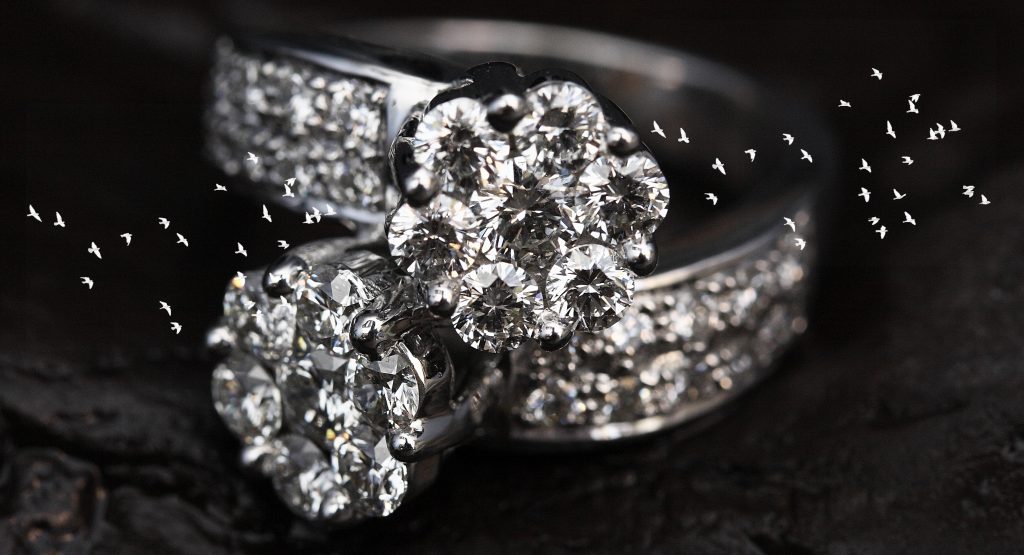Jewellery Care Tips
General Care Instructions for all Jewellery Types
Always remove your
jewellery when applying scent, lotions and potions, or even better, always put your jewellery on last when getting dressed. Please note that chlorine is especially damaging to jewellery. Ensure that you rinse off any chemicals that come into contact with your jewellery straight away to avoid build up which can make cleaning difficult. Avoid storing your precious metals jewellery next to watches with leather straps and other non-precious metals. Store jewellery separately so that pieces do not tangle, rub or scratch against each other.
Gold Jewellery Care
Gold is the only precious metal that will not tarnish. It is a relatively soft metal and care should always be taken with your gold jewellery. Generally, the higher the carat weight, the softer the metal. Gold should be cleaned regularly in order to maintain its beauty and shine. A soft, lint free cloth or even better a gold polishing cloth is an effective way to keep gold jewellery looking its best.
Sterling Silver Care
Sterling Silver is an alloy of silver and other metals, usually copper. Pure silver is too soft for everyday wear; therefore, copper is generally used to give it strength while at the same time preserving the ductility of the metal and its beauty. As with most precious metals, sterling silver tarnishes although it is less likely to happen as quickly if regularly worn. Clean your silver jewellery in warm soapy water, ensuring that it is rinsed thoroughly and dried before storing. Alternatively polish your silver jewellery with a soft cloth.
Gemstones Care
A gemstone is a mineral highly prized for its beauty, durability, and rarity. A few noncrystalline organic materials are also classified as gemstones such as pearl, coral and amber. Gemstone hardness is based on a standard called the Mohs scale, where the higher the Mohs scale number, the harder the stone. It is important to consider this when cleaning, wearing and storing your gemstone jewellery. The build-up of hand cream, finger prints and general dirt is common amongst your most loved jewellery, and can easily be cleaned. As a rule of thumb, gemstones at 7 and above on the Mohs scale can be cleaned with warm water, a touch of mild soap and a soft brush. For gemstones less than 7, swap the soft brush for a soft cloth. All gemstones also susceptible to damage by chemicals, water and even sunlight but prolonged exposure to the latter may cause certain gemstones to become paler. Examples include amethyst, ametrine, aquamarine, aventurine, beryl, citrine, kunzite, rose quartz and smoky quartz. Some gemstones such as opal, pearl and turquoise are fairly porous and should not be immersed in water for too long.
Particular care should be taken when cleaning your emerald jewellery. A widespread practice is to treat emeralds with some form of fine oil in order to disguise the very frequent appearance of flaws. For this reason, emeralds should never be cleaned in an ultrasonic cleaning device; as such treatment will usually empty any flaws which reach the surface of the stone of any oil content, with a disastrous effect on appearance.
Mohs Scale
Devised by the German mineralogist Friedrich Mohs, this scale is a means of grading the relative hardness of minerals. Using ten common minerals, Mohs put them in order of their ‘scratchability’; placing talc at 1 and diamond at 10. Quite simply, each mineral will scratch the ones below it, and be scratched by those above it.
Talc / 1
Gypsum / 2
Calcite / 3
Fluorite / 4
Apatite / 5
Orthoclase / 6
Quartz / 7
Topaz / 8
Corundum / 9
Diamond / 10
Diamonds Care
A mineral composed of pure carbon, diamonds are the hardest naturally occurring substance known; however, they can still suffer chips and fractures from sharp blows. It is possible to scratch a diamond with a diamond, so please take care when wearing and storing your diamond jewellery. Clean your diamonds with warm soapy liquid and a soft toothbrush, rinsing the stone and setting afterwards to ensure no soapy residue.

